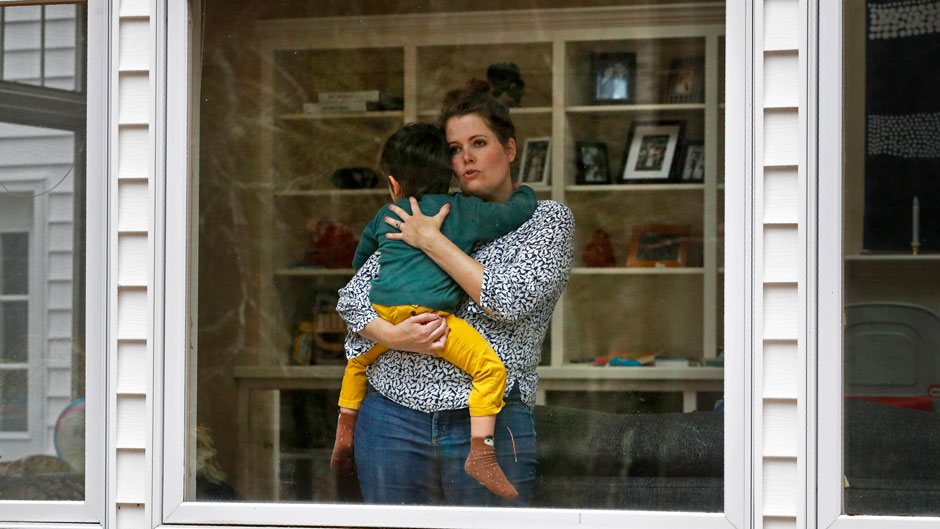In the video, a toddler spots his father arriving home from his work as a nurse. The young boy sprints toward him with arms outstretched, eager for a warm hug, but instead he is met with a sharp rebuke from his dad ordering not to touch him.
The son stops dead in his tracks. The father bursts into tears.
Social distancing. The reality of our new normal. It seems unreal and unnatural.
Experts warn that it is the only way to mitigate the deadly COVID-19 pandemic, which has killed more than 72,000 worldwide.
As more and more U.S. residents are ordered to stay inside and not interact with others, University of Miami experts say there are certain psychological side effects to distancing ourselves from other humans.
“We are all experiencing a lack of activation, and we are away from family and colleagues who made up an important part of our daily lives,” said Jill Ehrenreich-May, professor of psychology and director of the Child and Adolescent Mood and Anxiety Treatment Program in the College of Arts and Sciences. “We all need activities and interaction with others to maintain a good mood.”
Social isolation can be harmful. A March 14 article in The Lancet medical journal looked at 24 studies that examined the psychological outcomes of people who were quarantined during previous epidemics. It found that 34 percent of the 938 individuals studied showed psychological distress, which can indicate anxiety, depression, and insomnia. Those with preexisting mental health issues are at a higher risk of psychological distress.
Aggravating the problem is the unpredictability of how long the pandemic will last..
“It is a time of uncertainty, and that in itself leads to anxiety,” Ehrenreich-May said.
But even though people cannot be near each other, all across the U.S. they are finding ways to create communities, said Debra Lieberman, associate professor of psychology, who studies evolutionary psychology.
“The online concerts, where musicians are playing from their living rooms or porches, allow people to feel like they are part of a community,” she said. “Friends and colleagues are having happy hours on Zoom, and at least in my neighborhood, people are stopping to talk to neighbors, albeit from a distance, whom they typically rush past. We were not meant to be cooped up.”
Many others have found ways to connect via FaceTime with loved ones, especially with members of the family who are over 65 years old and are most vulnerable to the virus.
But there are ways to help ourselves during these trying times, said Ehrenreich-May.
Here are a few of her suggestions:
- Remain in the present. If your mind wanders to future events you are unsure about, notice that but gently remind yourself to re-focus on the “here and now.”
- Notice the positive things happening around you. Enjoy the little things.
- Restrict the amount of time you see news. Check once or twice a day.
- Keep a routine as much as you are able. (Wake up at the same time, eat at the same time, go to sleep at the same time.)
- Try to remain connected with family and friends through the internet.
For some, keeping a journal at this time can be helpful in processing their feelings and gaining some perspective on how they are dealing with the crisis.
Tsitsi Wakhisi, associate professor of professional practice in the School of Communication, believes that journaling during this time of social distancing can help create a collective community memory of the pandemic.
“What I remember most about the horrors of the Nazi death camps is not just what was written in the newspapers and played on the newsreels but the ordinary and extraordinary experiences of a family in peril as told to us by Anne Frank,” Wakhisi said. “The stories that haunt me most about the African slave trade are not those that are recorded in historical accuracy but the ones filled with tears and anguish recounted in Julius Lester's ‘To Be a Slave’ and other slave narratives.”
Lieberman also believes it is helpful to see the positive side of this period of isolation since it provides a respite from the hustle and bustle of everyday life. She is spending time with her fifth-grader.
“We have been given time,” she said. “We have this time, so let’s take it to our advantage.”
Lieberman said some people could focus on doing things that were difficult for them to do because of very busy lives. These could include getting more sleep, eating healthier meals, or cleaning out closets.
“We have been told that there will be at least one more month of isolation. A month is a good amount of time to create new positive habits,” she added.

